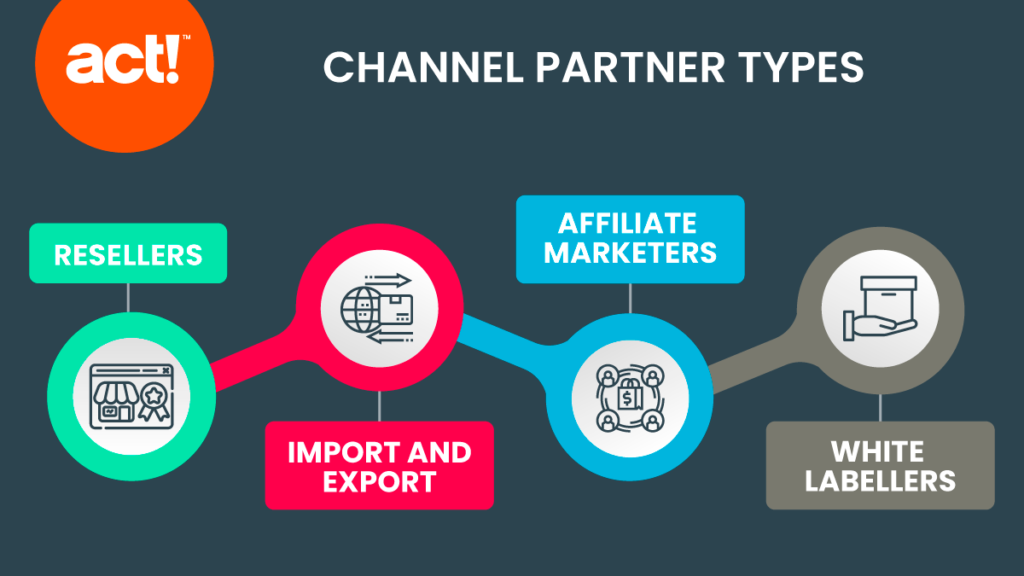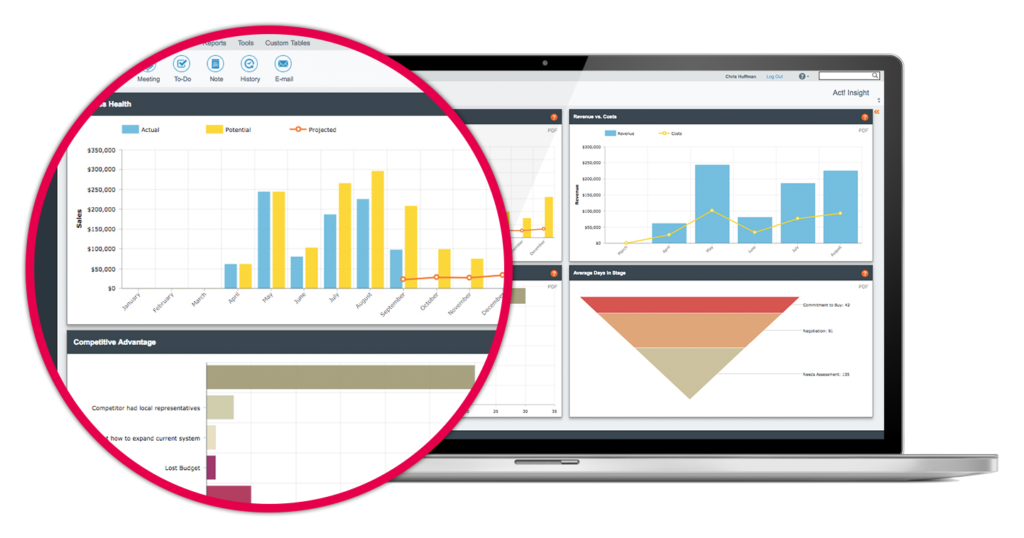When looking to increase sales, businesses will often focus much of their energy on growing their direct sales channels. For example, by developing their eCommerce store or direct sales teams.
However, businesses that only focus on these income streams may be leaving a significant amount of revenue on the table. They should also consider using channel sales as a way to effectively increase sales and grow revenue.
What Does Channel Sales Mean?
Benefits of a Channel Sales Strategy
Drawbacks of a Channel Sales Strategy
Example of Channel Sales in Use
How to Implement a Channel Program
How to Find a Channel Partner
What Does Channel Sales Mean?
Channel sales is a method of selling in which a company distributes its product through several different channels. These can be directly through its own sales team, as well as through third-party sellers.
Using a channel sales strategy can be an easy way for your brand to increase its sales without significant upfront costs. It can also diversify income streams leaving companies less reliant on a single method of making money.
There are downsides to consider, however. Brands that use channel sales will have to give up a percentage of revenue and some control over the sales process.
Benefits of a Channel Sales Strategy?
More Sales
When using a channel sales partner, you will be able to take advantage of their existing reputation, distribution, and customers.
Imagine a fashion brand that decides to sell its clothes in a famous department store. It will instantly get its product in front of far more customers than it would otherwise have been able to do.
Additionally, if the store has a reputation for selling high-quality items, the band will automatically be considered high quality.
Cost-Effective
Using a channel partner will also cost your company less upfront. In the above example, the brand doesn’t have to pay for new staff or sales members, doesn’t have to cover the costs of opening shops, and may not have to spend as much on marketing.
Brand Recognition
Choosing a channel partner with a large customer base and a good reputation can help little known brands build a positive image. To do this effectively, brands have to be careful about the channel partners they choose.
Entry into Difficult Markets
Channel partners can help brands enter markets that are difficult to reach without certain expertise. For example, teaming up with a distributor in a foreign country will smooth the process of entering the region.
Depending on the agreement, the channel partner may take care of adhering to regulations, hiring staff, and putting in place an effective marketing strategy.
Drawbacks of a Channel Sales Strategy
Less Control
Having a third party take control of much of the sales process means the brand loses control. If sales aren’t going well, for example, you may have no right to adjust the sales process. This may be the case, even if you think you could make a positive impact.
Lower Profits
While many methods of channel sales will have less up-front costs, you’ll have to share the profits brought from the sales of your product with your partner. This means you’ll end up bringing in less revenue per sales than you would otherwise.
Potential for Brand Damage
As we mentioned in the benefits section, your brand image will be affected by the reputation of your channel partners. While this can be positive, it can also harm your company if your partners don’t treat customers of your product well or if their brand is involved in a controversy.
Example of Channel Sales in Use
The specific benefits and drawbacks you receive for your channel sales strategy will depend on the type of plan you choose.
Here is a look at some different types of sales channels and how they work.
Resellers
Resellers are channel partners that buy your product and then sell it on to the final customer. Resellers buy your product at a lower price than they sell it. However, the company makes up for this due to the potential for selling in bulk.
The reseller will generally take care of the entire sales process, which means the original company won’t have to do much work. But, it also means they don’t have much control over how the partner sells their product. Reselling is most commonly used for physical products.
Affiliate Marketers
If you have an agreement with an affiliate, the company will usually market your product and then take a cut of the cost of the sale.
This is a good strategy for companies without much brand awareness or a small marketing budget. They can outsource the process of marketing their product and then only pay when they make a sale.
Many brands and types of products use affiliate marketing, including both those that sell physical products and SaaS providers.
White Labellers
White labelling is a sales channel in which the company provides an unbranded version of their product to the white labeller who sells the product as if it were their own.
An example of this could be an app builder that provides its software to agencies who use the software to provide clients with apps.
The exact amount of control companies keep over the selling process will depend on the white label agreement, although it will generally give up a lot of control. Although, as the brand’s name is literally erased from the product in favour of the white labeller’s brand, there is little chance of the company sustaining reputational damage.
Import and Export
Import and export partners can simplify the process of putting your company’s products in front of an entirely new audience. There are many different types of import/export partners. These range from companies that simply distribute the product in the second country to licensing agreements, partnerships, and other models that help the company establish a brand in the importing country.

How to Implement a Channel Program
There are several things you’ll need to take care of before implementing a channel sales strategy. Here is a look at some of them.
Form a Channel Team
One of the benefits of channel sales is that you don’t have to recruit people to sell your product directly. Nonetheless, you will need someone, possibly even a team, in place to manage your channel sales strategy.
This team will be tasked with finding suitable partners, managing relationships with channel partners, and learning from channel sales experiences to optimise the process.
Identify What You Want from Channel Sales
Along with your channel team, you need to consider what you want from your partnership. For example, to introduce your product to a different area, or to increase the visibility of your brand.
You should also consider the amount of control you are willing to give up in the sales process, as well as the amount of profit you are happy to share.
Identify Channel Sales Partners
The next step is to identify channel sales partners based on what you decided you want channel sales to bring to your business.
The section below has some insight into how you should do this. Once you identify partners, you can begin to approach them.
Analyse and Refine
The final step is to analyse and refine your channel sales strategy. Look at what is working and decide if there are further ways you can use this channel, for example, by bringing in extra partners in that area.
Alternatively, if channels aren’t working, think about whether there is anything your brand can do to improve sales within the channel.
How to Find a Channel Partner
Finding a suitable channel partner is a vital part of ensuring the success of any channel strategy. Being selective with the partners you work with will makes it more likely the partner will be a good fit.
Look at the Channels Your Competitors are Using
First, look at the type of sales channels your competitors are using. While you may not be able to get exact data about how successful each channel is, if a company has been using the channel for a while, they are likely to be benefitting from it.
Once you have identified channels, you can either approach the same places about selling your product or, if there will be a conflict of interest, approach similar companies.
What Value or Expertise will the Partner Bring?
It’s important to consider the value the sales channel partner will bring to your company. If they don’t bring much value, you may be better off making sales on your own.
In some cases, the value a partner brings will be obvious. Exporters, for example, will be able to get your product in front of an entirely new market, something that would be very difficult (or costly) should you attempt to do it on your own.
Is the Channel Partner a Good Fit for Your Brand
If your company is going to be associated with another brand, you better make sure it is a good fit. Think about the reputation of the partner and whether they are likely to add value to your brand. You should also think about the audience the partner can introduce to you.
If you work with a reseller that typically sells products to discount stores, your product is going to be associated with other discount brands. Of course, there is nothing wrong with that if this a good fit.
If it isn’t, however, you may be better off holding back and looking for a different reseller or even choosing a different type of channel.
Don’t Stop at a Single Channel
When channel marketing, there is no reason to stop at a single channel. Instead, you can use as many as you see fit to help grow your brand. A cosmetics company, for example, may sell directly through its website, through third-party eCommerce sites, and through resellers that sell to local retailers.
Ultimately, if the channel is adding value and you have the capacity to support and manage the channel, you can use as many as you see fit.
Channel sales is a useful way to grow your business’s revenue streams. While there are downsides, such as a loss of control and the fact you’ll have to share revenue, in many cases, the upsides significantly outweigh the negatives.
Why Choose Act!?
Act! is a powerful sales and marketing automation platform designed to provide businesses with everything they need to run and grow their business. Here are some of the features that will benefit sales teams:
- Activity Tracking and Alerts: Track and prioritise meetings and activities associated with your contacts. Benefit from alerts that keep you on top of your customer commitments.
- Sales Process Automation: Manage opportunities using a powerful, out-of-the-box process or one you customise. Complete activities in each stage of the sales process to keep deals moving.
- Opportunity Tracking: Track probability of close, products, lead source, status, and more for every opportunity for total visibility and control of your sales pipeline.
- Dynamic Sales Pipeline Management: See a complete, visual representation of your sales pipeline at-a-glance to project revenue, adjust your strategy, and quickly focus your efforts.
- Sales Reporting: See dynamic, visual snapshots of real-time metrics covering sales productivity and performance, sales pipeline health, top performing products, win/loss analysis, and more with interactive, graphical dashboards.



